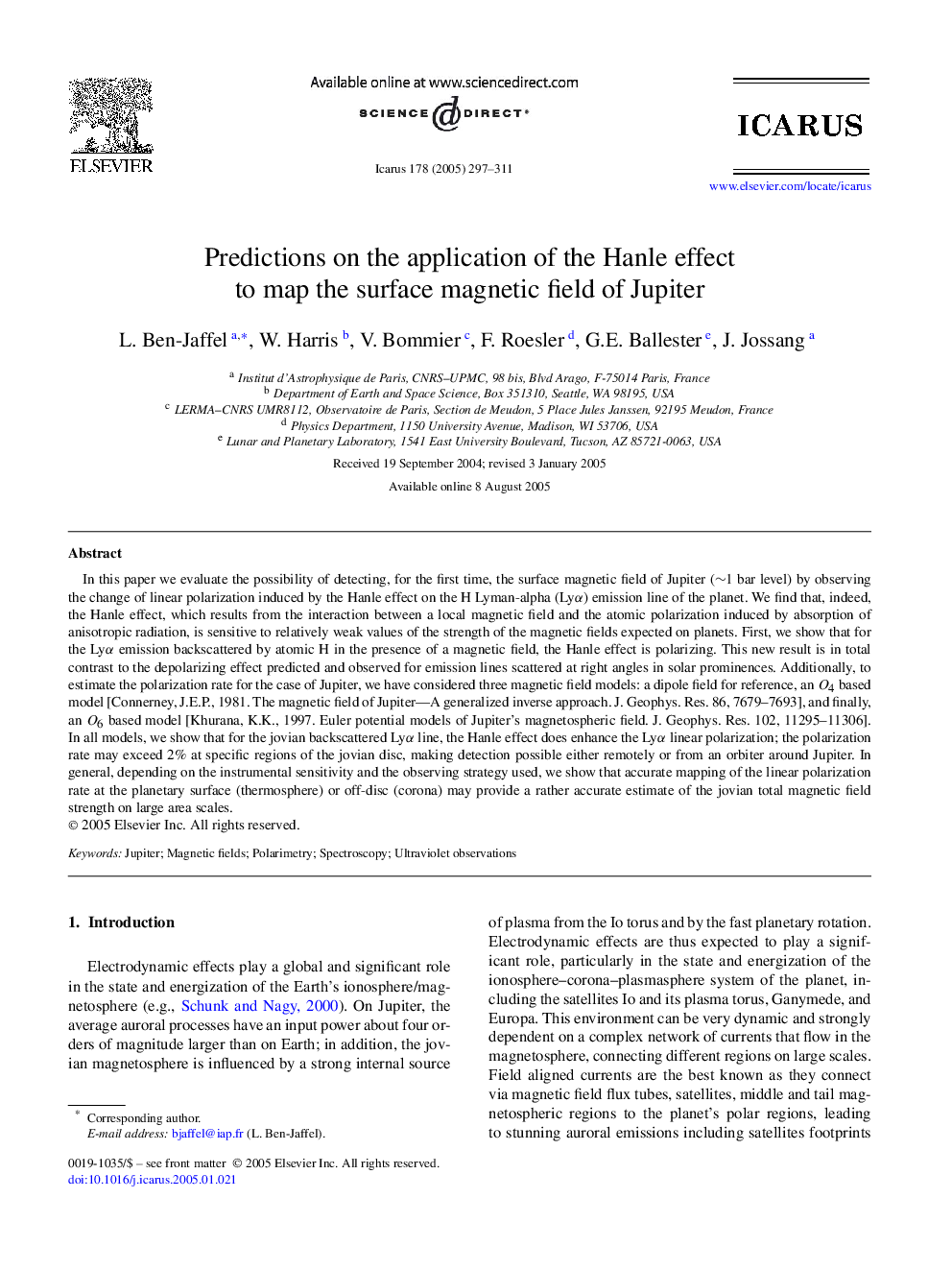| Article ID | Journal | Published Year | Pages | File Type |
|---|---|---|---|---|
| 10701828 | Icarus | 2005 | 15 Pages |
Abstract
In this paper we evaluate the possibility of detecting, for the first time, the surface magnetic field of Jupiter (â¼1 bar level) by observing the change of linear polarization induced by the Hanle effect on the H Lyman-alpha (Lyα) emission line of the planet. We find that, indeed, the Hanle effect, which results from the interaction between a local magnetic field and the atomic polarization induced by absorption of anisotropic radiation, is sensitive to relatively weak values of the strength of the magnetic fields expected on planets. First, we show that for the Lyα emission backscattered by atomic H in the presence of a magnetic field, the Hanle effect is polarizing. This new result is in total contrast to the depolarizing effect predicted and observed for emission lines scattered at right angles in solar prominences. Additionally, to estimate the polarization rate for the case of Jupiter, we have considered three magnetic field models: a dipole field for reference, an O4 based model [Connerney, J.E.P., 1981. The magnetic field of Jupiter-A generalized inverse approach. J. Geophys. Res. 86, 7679-7693], and finally, an O6 based model [Khurana, K.K., 1997. Euler potential models of Jupiter's magnetospheric field. J. Geophys. Res. 102, 11295-11306]. In all models, we show that for the jovian backscattered Lyα line, the Hanle effect does enhance the Lyα linear polarization; the polarization rate may exceed 2% at specific regions of the jovian disc, making detection possible either remotely or from an orbiter around Jupiter. In general, depending on the instrumental sensitivity and the observing strategy used, we show that accurate mapping of the linear polarization rate at the planetary surface (thermosphere) or off-disc (corona) may provide a rather accurate estimate of the jovian total magnetic field strength on large area scales.
Related Topics
Physical Sciences and Engineering
Earth and Planetary Sciences
Space and Planetary Science
Authors
L. Ben-Jaffel, W. Harris, V. Bommier, F. Roesler, G.E. Ballester, J. Jossang,
